Crazy Comparison! Sony A7RII and 55 1.8 vs Olympus PEN-F and 25 f/1.2
Man, I have been doing these crazy comparisons for years and years now, and every time I do there are many comments and many who like to be outspoken about this or that..but remember, these are all in fun and while they are real world side by side tests that show real world differences, they are not meant to be scientific tests, as that is not what this site has ever been about. It’s about WYSIWYG from each camera and what you can expect out of a specific combo of body and lens. This time, we have a full frame vs a micro 4/3 body and are looking at Depth of Field and light gathering.
This morning as I sit at my desk I was looking at my Sony A7RII and 55 1.8 Zeiss sitting next to my silver Olympus PEN-F with Olympus 25 f1.2 attached. I remember someone asking me to do this comparison, and figured it could be fun. I immediately thought “well, the Olympus will lose on ISO noise, will lose at shallow DOF and will lose on detail”. But hey, I love my PEN-F and 25 1.2. So I wanted to see how it would go.
Now, it is true that using the 25 f/1.2 on the PEN-F would give me a Depth of Field like that of a 50mm lens at f/2.4 on full frame. Light gathering is the same, so ISO was set to 1000 for two of these shots, and wide open on the Olympus at f/1.2 vs f/2.4 on the Sony, as these are equivalent apertures.
You must click each image to see the larger image. ISO 1000 for both.
Top one is from the PEN-F and 25 f/1.2 at 1.2. You will see more noise in the Micro 4/3 shot at ISO 1000.
…and below is the Sony A7RII with 55 1.8 at f/2.5 to match the DOF of the Olympus. ISO 1000, less noise than the Micro 4/3 shot as we expect.
In the image above I prefer the Olympus rendering but I do because it is warmer (a trait of the Olympus color signature), it seems more inviting due to this warmth. The Sony renders cooler out of camera and always has and will, but it could have been warmed up in post to match the Olympus, so technically, the Sony will give you better IQ due to more MP, more DR, and the ability to go even more shallow with the DOF. But what about detail? This is a spot where Micro 4/3 can indeed do well in some cases…
The Olympus PEN-F with the 25 f/1.2 at 1.2. This lens is stunning wide open, and delivers sharpness and pop that rivals most high end f/2 50mm lenses.
–
Wide open with the Sony A7RII and 55 1.8, this time wide open at f/1.8 which allows us to see the depth of field difference. The Olympus is at an f/1.2 aperure but it is technically a 25mm lens, not a 55mm. So we will get the DOF or Bokeh from a 25mm lens (less) compared to the 55 (more) as the longer in focal length you go, the more shallow DOF that is possible.
To me, both shots above from the Olympus win me over in regards to the color signature. Some will prefer the Sony here as some prefer cooler and some will not care as we know each photo could be made to look the same with some color tweaks. What this test tells me though is that Micro 4/3 owners have a lens here that IMO is a must own if you like fast aperture and a 50mm equiv. focal length! It truly is a joy to use and the PEN-F focused about 2X as fast as the Sony for these two shots. It was instant with the 25 f/1.2. The Sony hunted for a second or two for these shots in the same light. The Olympus PEN-f is for sure the faster and most fun camera to shoot of the two but in the end, when shooting RAW the Sony will eek out more power and more depth to the iQ.
With full frame, we use real 50mm lenses to get 50mm. With a crop sensor like on M 4/3 we are using wider angle glass in the 25mm, so this is going to always produce a wider DOF. Light gathering though, is another story. The Olympus f/1.2 is an f/1.2 in light gathering terms.
Do not believe me? TAKE A LOOK BELOW:
Both cameras, one full frame, one micro 4/3. Same ISO, same aperture, and same exposure. They look the same in exposure as both were shot at f/2, same ISO of 200, and same shutter speed of 1.6s. This proves that both lenses, on these different systems, full frame and micro 4/3 give us the same light gathering capabilities. The weakness in Micro 4/3 due to the smaller sensor is that it will have higher noise levels once we crank the ISO up.
Click to see larger. The Olympus with 25 f/1.2 at f/2 ISO 200, 1/6s, tripod
–
Now the Sony and 55 at f/2, ISO 200 and 1/6 second, tripod. The Sony will give us a more shallow DOF which is why the crop is blurred. The camera focused on the copper wire and therefore, due to the razor thin DOF, what is behind the copper is slightly out of focus. Some call this a weakness of larger sensors and fast glass.
But as for exposure? Just about the same. The Sony added in +3 exposure comp even though I was in all manual. Therefore it is a shade lighter.
Me, I love both systems. I use them both and have a ton of shots and time on my Sony A7RII. The PEN-F is getting much more time lately though, with the 25 1.2 and my 7-14 pro. My full review of the 25 f/1.2 should be up by the end of the week. Then after that, I will do my review of the Fuji X-T2 😉
Have a great day everyone!

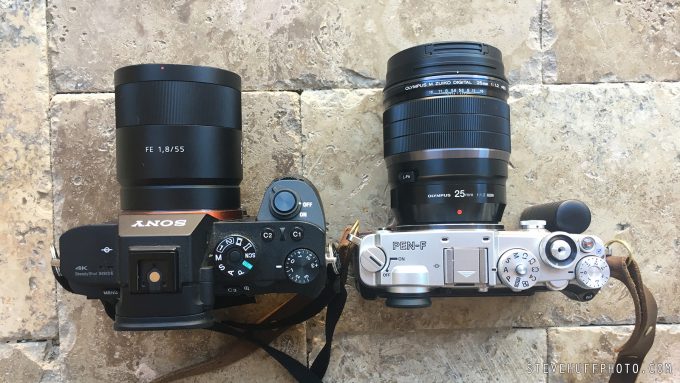
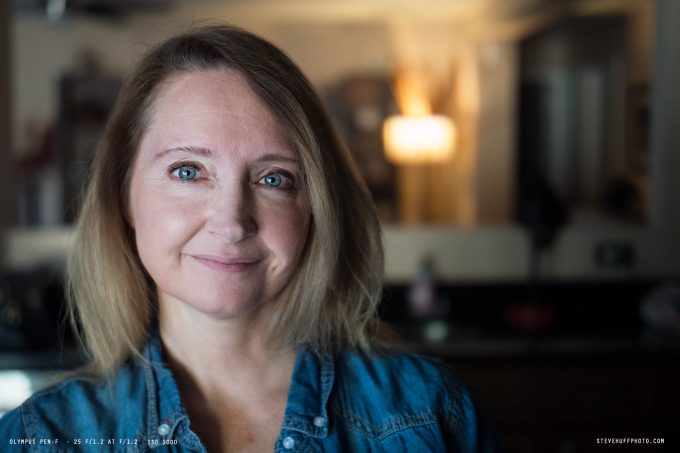
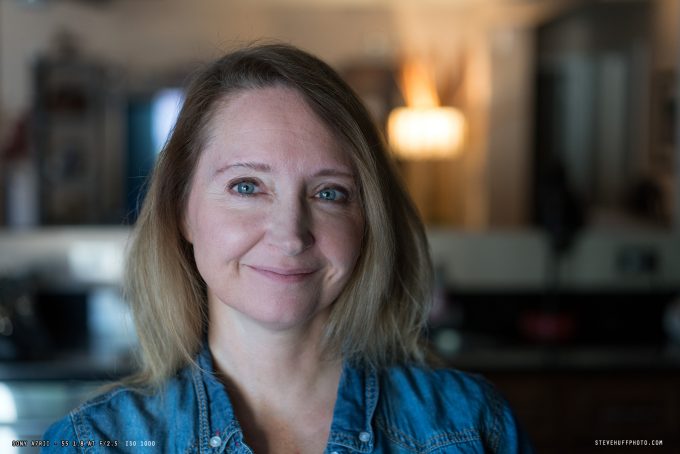
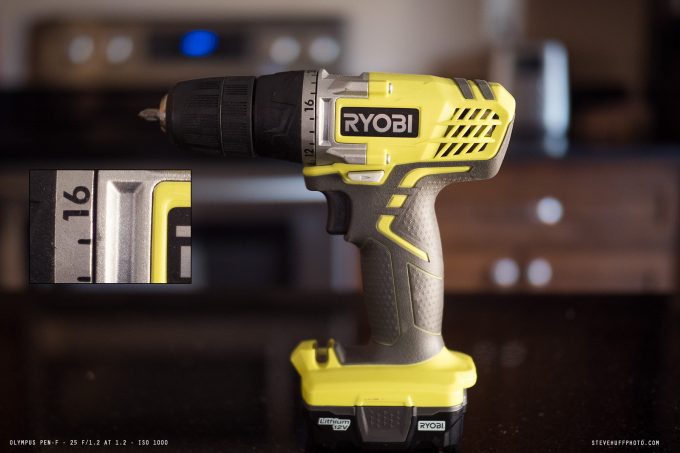
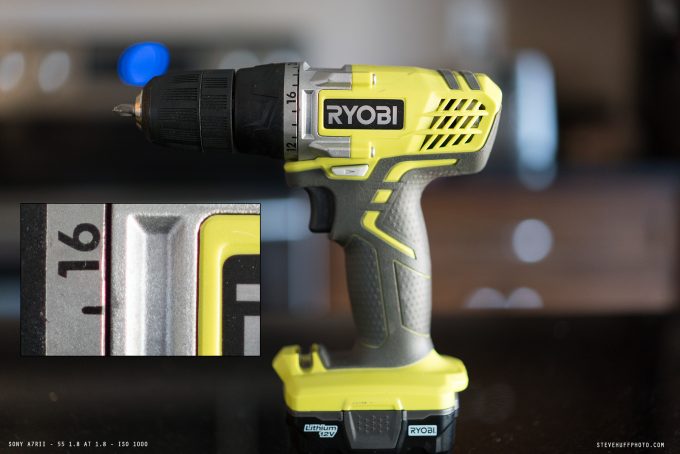
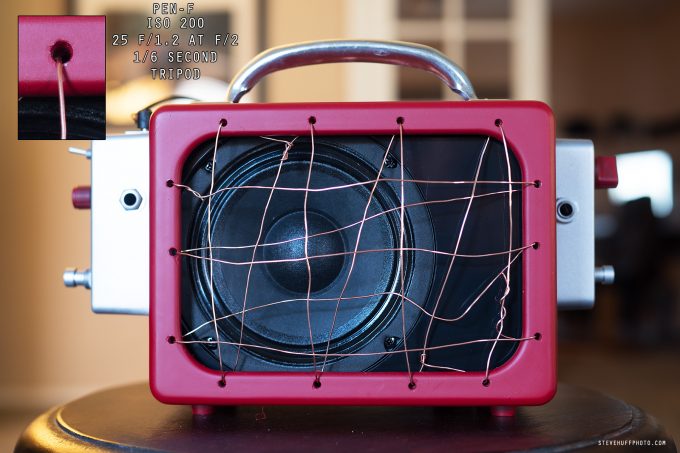
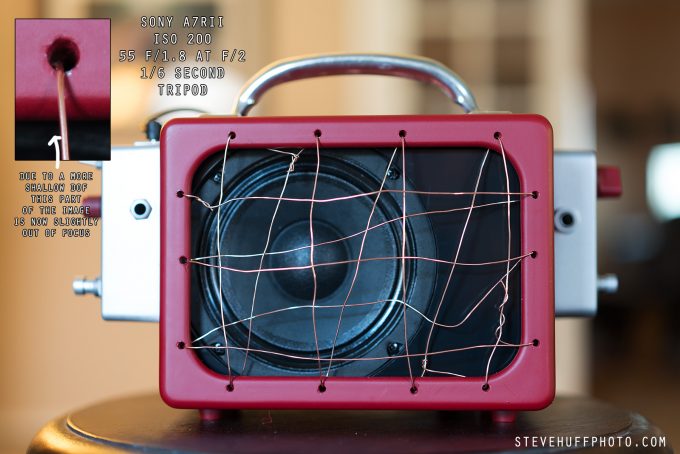
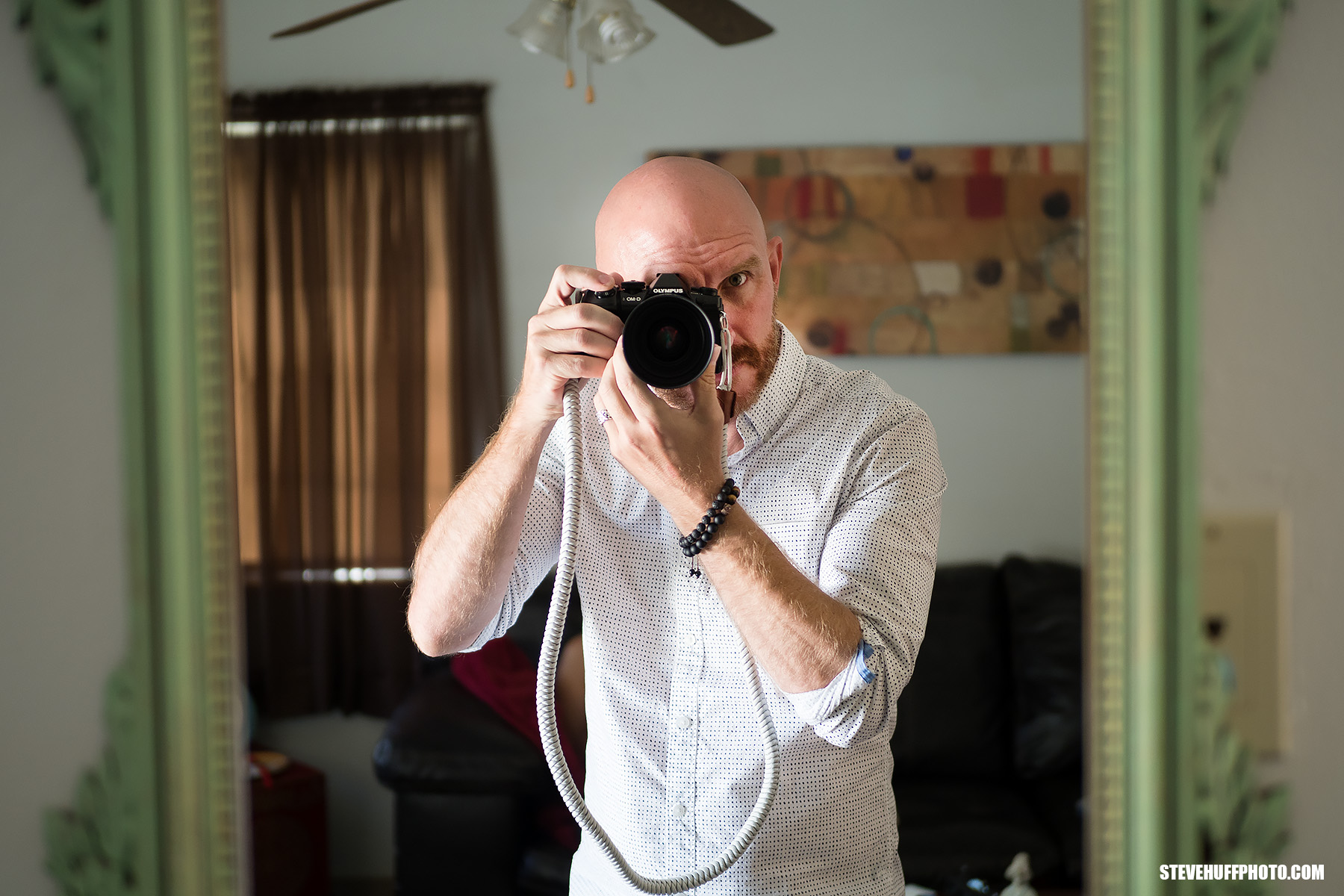
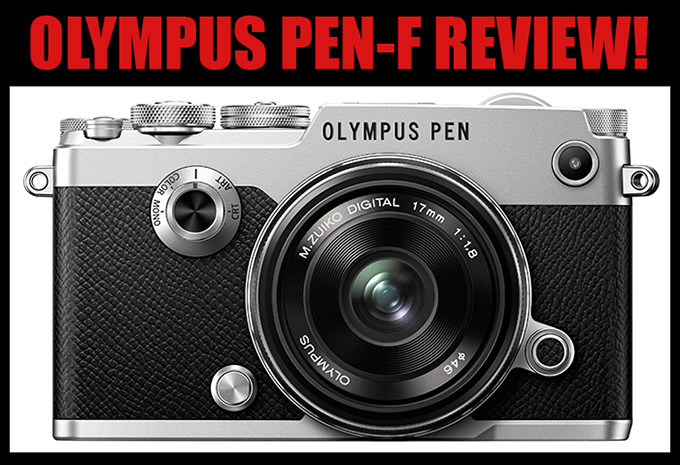

It may be a crazy comparison, but it is just the comparison I was looking for. Although I love my Pen F, I’ve been itching to get something full frame to use with my OM legacy lenses. I have to say, the Pen-F holds it own, despite a much smaller sensor. I routinely use it inside in available light at iso 6400 with no hesitation. The Sony would give me better files in terms of noise and dynamic range, but I’m unlikely to keep it with me as often for the spontaneous shots. I nonetheless went and ordered a used a7ii from B&H to try it out. Cropped sensors are OK for my purpose, my favorite cameras now being the Pen-F and the Leica X113 (with the ugly but useful EVF). Still I wanted the Sony, and I wanted the comparison you have provided
Excellent comparison. Both cameras are obviously capable of producing lovely images. Overall, I prefer the Olympus Option, but it is more of a “system choice,” for me.
Olympus clearly trashed “full frame”
I prefer the rendering of the Olympus, but opening and viewing the two photos, the Sony does have more micro contrast and finer details, even at the same size image. That’s what you get with a bigger sensor. It’s not just the resolution.
Hi Steve,
nice comparison! Here is one more way to look at it: try to get a picture with the same depth of field. That would mean having the Sony at F2 (or a bit more, I did not do the math) and the Olympus at F 1.2. If you then ask also for the same exposure time, you will find that you need to increase the ISO of the Sony by about two steps. I would expect that the noise from this higher iso is compensated by the larger sensor size and the results for both cameras would be very similar – except for resolution of cause.
For me this is not a theoretical question; in real life I often find myself wanting a certain shutter speed and depth of field and as soon as you need to stop down your aperture, the full frame advantage is gone.
I don’t see any important difference at this size and I guess none can be seen in a small or medium print either.
The Olympus lens looks like a great option for Micro 4/3 shooters.
Thanks for the comparison Steve.
I’m currently having fun putting The Fuji XT2’s Acros simulation up against the Pen F’s monochrome profile 2.
I’m building up a page of images for comparison.
It would be interesting to see what everyone prefers….
That is hilarious as I was doing that yesterday! But more for my own curiosities!
Haha awesome.
I’ve got visions of us both sitting there doing the same stuff like a couple of geeks
How do you feel about them both?
At the moment I think the Pen F profile makes photos look great in any light whereas the Acros simulation needs nice contrasty light to look its best.
You’ve stirred up some healthy debate here, Steve! I’m amazed, as I read through it all, to see that there is some genuine understanding of the relative merits and compromises that you meet across different systems, as opposed to the hysteria you can read elsewhere on the ‘net every time someone tries to compare different formats. Brilliant stuff, thanks.
Comparing apples with oranges is ok sometimes. What are the real benefits of full frames versus cropped sensors. That’s a bit more of photography traditional hiatus.
it is NOT “cropped”, just a smaller System
m4/3 with high quality glass + IS + AF (+ WR) is very capable nowdays
Absolutely! The terms “full frame” and “cropped”, as applied to 35mm versus smaller formats, is misleading and make 35mm sound elitist. There are bigger formats and smaller formats and all involve some sort of compromise.
I’d go so far as to say that, for most uses, 4/3 or APS-C require the least compromise, based on how decades of film photography led to 35mm as the best general format and how well smaller digital formats compare to that. Personally, I’d love it if someone made a nice system based on 1 inch sensors…
I like how open minded many of the comments here have been. Great stuff.
Exactly what I was meaning. Thanks
Right. With some exceptions, for example the Leica M8.
I would call it a silly comparison. But I would tell Sony to learn from the E-M1 about usability and single point focusing. It is almost as usable as dslrs. I shot an E-m1 last week and from now on I will have issues with the A7r and the A7s.
At the very first moment I look at pictures I thought okay somebody’s better
I was preconcepted with the quality of Sony. But then I saw I mixed up the pictures.
It’s funny to see that I Like the Olympus picture’s more!
First image framing is different benefiting the Olympus. That noise at ISO 1000 is unacceptable to me: only useable for blog-sized images on the web.
Second image DOF is drastically different. It is too thin on the Sony for a fair comparison.
Overall this post proves the Olympus lens is a serious contender and a very good lens. On the other hand for less money and less weight there is the Sony which is a more flexible lens: more control over DOF and better noise performance as seen in these images – hope this settles the light gathering debate for once and for all as the Sony f/1.8 smokes the Olympus f/1.2 here.
Why would it be for this 1000 ISO noise???
I don’t get it! And think it’s stupid.
I nearly want to reply, full frame is good for internet. If you want true pictures, use 8×10 camera. !!
Want tiny.
Just stick already EPL8/7/5/3 with Olympus 25/1.8 or Olympus 45/1.8 or Panasonic 20/1.7 pancake.
EPL3 $100 best bang per buck (touchscreen, 3axis IS)
Olumpus 45/1.8 $150 used.
You can thank me later ;-))
Exactly! I play with my Ep-2 from time to time and I forget that at low-iso it delivers awesome results. With my tiny 17mm 2.8!
Want tiny.
Just stick already EPL8/7/5/3 with Olympus 25/1.8 or Olympus 45/1.8 or Panasonic 20/1.7 pancake.
EPL3 $100 best bang per buck (touchscreen, 3axis IS)
Olumpus 45/1.8 $150 used.
You can thank me later ;-))
Want tiny ? ?
Just stick a EPL8/7/5/3 with Olympus 25/1.8 or Olympus 45/1.8 already.
EPL3 $100 best bang per buck with touhscreen & axis IS
Olympus 45/1.8 $150 used.
If you find yourself completely happy with shooting full frame at apertures 2.4 and above, and feel this is enough short depth of field for you, and enough low light ability for you, then there is absolutely no reason to not consider M43 with it’s two 1.2 lenses with more to come.
There is no advantage in noise with these camera’s with anything shot 2.4 and above from the Sony. 1.2 and 2.4 are equal depths and the M43 will use lower ISO’s (two stops lower).
The only difference is when the Sony starts gathering more ‘total’ light than the Olympus. This is when the lens is opened up past 2.4. In that case the Sony will pull ahead in low light situation for total noise and also short depth of field.
If M43 ever come out with a 1.0 lens this full frame threshold will be reduced to F2 lenses.
Yes this is essentially the point I was making below. MFT with fast lenses seems to be essentially like FF with a bit slower lenses. And FF lenses like the Sony Zeiss 35mm f2.8 and Voigtlander 40mm f2.8 make a FF system pretty much like an MFT system. MFT does have an ~F1 lens—the Voigtlander 25mm F.95, which is the same size as the equivalent Sony Zeiss 55mm. So with either system you can (in theory—although lens choice is an issue) choose to go big or small with similar results.
I’d be interested in more very small E-mount lenses with so-so apertures so I could decide whether to go bit or have a more compact MFT-like setup with my A7r ii. I know of lots of M-mount lenses that can be adapted very compactly. (The Tele-Elmarit, CV 75mm F2.5, and especially the tiny Macro-Elmar for example.)
http://www.juzaphoto.com/m_topic2.php?l=it&t=1930375
Yes, but … The Sony 55 1.8 lens opens up more than the Olympus 25 1.2 ( for dof), it is smaller, cheaper, and arguably equal quality. In addition, you are using it on a much bigger sensor with higher ISO potential, better DR and a far greater ability to crop. So, where is the advantage of the Olympus other than lower body price and a faster user experience. I just don’t get M43, if it is going to be as large as FF, with even bigger lenses!
Hi,
The entire message of this comparison is that pictures from the m43 format are now indistinguishable from the FF. The FF campers got used to look down to m43, and this article clearly shows that these two systems are equally capable. Croppability is a valid from the technology view standpoint but it is a weak argument in the artistic and professional aspect. Proper composition should be done at the time of shooting a picture rather than in post production. DR in m43 is adequate.
Having Olympus with its m43 format and lenses gives an alternative to people who do not want to deal with the RAW compression that all Sony cameras have.
Again, the main message of the comparison is that to have FF quality pictures one doesn’t have to have a FF camera.
Hope this helps.
Val
Oly skin tones and color simply crush the Sony.
Depends on the lighting. Every Oly I’ve had seriously botches white balance with indoor LED or incandescent sources. Even with “warm colors” disabled the images are very warm and in some cases yellow.
With natural sun lit environments I’ve always been pleased with Olympus
For indoor LED: A+2 G-2
😉
It would be nice if Auto WB would just get it right without input. Panasonic and Fuji seem to correct WB much better in my hands.
My reaction: the Sony w. the 55 is something like 70 grams heavier than the Olympus — i.e. not much. Given that the Sony combo gives you more flexibility — shallow DOF if you want it and not if you don’t, that seems to me the better choice, as you’re not paying much weight penalty for that control.
My dream system is a variation of old Leica CL combo (28, 40, 90, all small lenses) plus two good zooms. Not really the subject of this comparison, but I wonder how the latest Fuji with the new 35mm f2 would do against these two fine cameras — as something like that Fuji f2 range of lenses seems like a sweet spot in the weight-quality trade off.
Tom, about flexibility my experience is that micro 4/3 is hard to beat. Most lenses focus considerably closer than their FF and APS brothers and sisters. If shallow DOF is your thing this is good news, because even more than larger formats, larger apertures or longer focal lengths changing the hyperfocal distance is the by far most effective of these four parameters.
I never had the Leica CL or its Minolta twin. I owned a Contax G with the same focal lengths. Fuji is great but with the focal lengths eqv. you mention the complete set is larger than the Leica CL. If that size your dream than go for micro 4/3. Olympus and Panasonic offer many choices of very small excellent and sometimes superior bodies and lenses. The best thing of course is to go to your favorite shop and see and feel them. They are all good. Just buy the one that is most sexy in your eyes. In the end it is all about having fun.
Thanks. I currently own both a Fuji — an XE-1 — and an m43: Olympus OM-D 10. I’ve got the kit zoom and the 27mm prime for the Fuji and the two consumer zooms plus a Panny 20 mm and 14mm lens pair for the Oly.
My reaction: the Fuji + 27mm is a great around town, always in the bag rig. Lighter than the Oly with the Panny 20 mm (equivalent focal length and DOF capacity; obviously more light gather for the M43.
When I hike, I love the Oly beyond any other choice: short zoom on the camera, 40-150 in a cargo pocket, 20mm in another. Light, covers me across a range of circumstances etc. Wouldn’t mind the ability to go wider, but still, I’ve been very happy across a number of mountains.
But I do love the Fuji for the way it feels and for the way its photos look to me. If you buy the good zooms in that line, or the fastest primes, it’s true you get up in weight quickly. But if you want to recreate the Leica CL w. the 28 f.2.8, the 40 f2 (a lovely lens) and the 90 f4 (I think), you could do this:
Fuji xe-2 plus 18mm f2; 27 f2.8 and 60 f 2.4 You’d get a total weight of 759 grams.
I’m having a little trouble tracking down CL system weight; the camera was 365 gms, imperceptibly heavier (15 gms) than the Fuji. The Leica lenses are, I think, a trifle heavier than the Fujis as well; you could argue, correctly, that they’re “better” — or at least more romantic. Surely the 40mm f 2 is simply more lustworthy than the cheap Fuji 27 mm pancake.
But still — at the very least, the size is comparable or smaller, and the results in the hands of a better photographer than I am would be just fine.
More to the real thrust of your point: the Leica CL system made a point of making really good but not the “best” lenses that were compact and worked well on that small body. Both Fuji and Oly/Panny offer options to do that, which is why I like both systems. And though I’ve played with, lusted for, and toy occasionally with a lottery-winning fueled purchase of a camera to match my friends Sony A S II plus the Zeiss 35 — I’d rather spend less money to carry less weight and still get damn good capabilities, however well or ill I can make use of them.
Thanks for this, interesting. To my eyes in the shots where the Sony has shallower dof as expected there actually looks to be more seperation of the subject from the background with the Olympus shots which I prefer. Probably just that in the Sony images the further away parts of the subject are slightly blurred due to the narrow dof, whereas with the Olympus all the subject is within dof and the distance to the background gives proper seperation. Easy to fix of course, just stop down the Sony lens, but if you do that then you begin to negate the benefit of the FF camera, and lose the f1.2 light gathering. Hmmm interesting.
Of course that should say “and lose the f1.8 light gathering” since I’m taking about stopping down the Sony lens. Oh for an edit button
Yes, interesting indeed.
Okay, not that interesting 🙂 Still, the 25mm 1.2 looks a keeper.
The portrait has just a lovely rendering in terms of focus. Personally, I would not want any less depth of field, as this would soften too much of the subject’s features. I often shot portraits at around f2.4 when I had a full frame camera. Now I get a very similar look on M43 with my Panasonic 25mm f1.4. The new Oly 25mm f1.2 looks to be a wonderful lens. No doubt the Sony 55mm f1.8 is also a great optic. Seems to me we are spoilt for choice these days.
Hi Steve
On a side note – some reviews have shown that the Em-1 mark 2 has some inconsistency focusing on the 12-100 f4. I was wondering if you experienced this and is the 25mm 1.2 more accurate than 12-100 f4 ,
As we all know some manufactures gear certain lenses faster than others – so I was wondering if you have experienced this when you and others had time with the new lenses and camera
Thanks Rick
I only used the 12-100 in Iceland, and I used it 85% of the time. Never had a focus issue with mine, so could be a bad sample? No idea but until I get my own lens, I will not be able to fully evaluate it.
Hi Steve,
nice comparison! Here is one more way to look at it: try to get a picture with the same depth of field. That would mean having the Sony at F2 (or a bit more, I did not do the math) and the Olympus at F 1.2. If you then ask also for the same exposure time, you will find that you need to increase the ISO of the Sony by about two steps. I would expect that the noise from this higher iso is compensated by the larger sensor size and the results for both cameras would be very similar – except for resolution of cause.
For me this is not a theoretical question; in real life I often find myself wanting a certain shutter speed and depth of field and as soon as you need to stop down your aperture, the full frame advantage is gone.
Hello Steve,
and now take both cameras and do somethink for the hearts of Pixelpeepers.
A7RII vs. Pen-F in high-res mode at f8.0 vs f4.0 to match DOV (that will be fun).
I vote for the Pen-F resolution-vise.
Thank you so much for your crazy comparisons, Steve!
That could be interesting and fun. Will see what I can do!
but in reality, you can use same shutter but lower ISO for your F1.2, so to get better image quality.
Buying Oly PRO lens is silly, and this 25 1.2 is the perfect example.
2x the price of the Sony, bigger and heavier. But the time you buy a full bag of PRO lenses the difference in body price has gone.
To me m43 is about small, light, cheap with good enough IQ. Going PRO lens is not the answer.
Micro four thirds gives you choice, like any good system. Compare Olympus “Pro” line lenses with Sony’s G Master range and the Olymus lenses don’t really look that big or expensive.
I totally understand your position on this, but I do agree with deep. It’s everyone’s choice. If I’m on the street, I like to shoot light, but for some other contexts, I like having my Olympus Pros when I prefer not to have my DSLR with me. It’s all about personal choice.
Telling other people their gear choice is silly without knowing anything about their goals, their personal tastes, their ergonomic preferences, their total system requirements, etc. is silly.
Not sure why people do it.
Interesting comparison. I have the 55 1.8 and love it, especially for its relative portability for the quality it gives. But I can see how you like the color of the Olympus. I actually find the Zeiss color to veer toward the warm, which is often nice but sometimes constricts the range of colors you get, which is visible in the last set, where the pinkish color of the wonder box looks more natural/vibrant in the Oly and more sepia-toned in the Zeiss.
Here’s my (long, sorry) take on equivalence of light-gathering and DOF between systems: On the one hand, it’s absolutely true that 1.2 is 1.2 in light-gathering with regard to ISO and shutter speed RELATIVE to sensor surface area, whether we’re talking about large format or a cell phone. That’s why a Linhoff lens at F5.6 would give you the same light and DOF (although different angle of view) whether attached to a Linhoff camera or awkwardly adapted to a Nikon 1. However, what’s far more important to me is ABSOLUTE light-gathering, not light-gathering per square centimeter. Because that’s what actually determines the qualities of the image, in terms of both DOF and low-light image quality (actual quality, not ISO). Of course, the Linhoff camera is going to gather precisely 1.5 gazillion times the absolute light gathered by the Nikon 1, because the same intensity is applied to a much larger surface, so it produce far greater detail with much higher ISO.
So theoretically, to get images of comparable quality on MFT and full frame (disregarding technical differences between sensors and so forth), F1.2 on MFT should be equivalent to F2.4 on full frame BOTH in DOF and total light-gathering, because the same amount of absolute light in MFT is being concentrated onto 1/4 the surface area of the full frame. Full frame may actually be able to use more light because it uses larger pixels and potentially less circuitry between pixels, potentially giving more than a 2-stop advantage. I don’t know. But the absolute amount of light hitting the sensor would be the same (4x the light intensity at F1.2 on 1/4 the surface area for MFT).
This suggests to me that, in a perfect world (no pixel gaps), the MFT F1.2 at 800 ISO might actually yield not just equivalent DOF but also equivalent IQ (noise level, dynamic range) to a FF F2.4 at 3200 at the same shutter speed. Like other posters, I wonder whether that 2-stop ISO difference holds here when shooting with the same shutter speed but double the F-stop in full frame. Or does the larger sensor provide more than this theoretical 2-stop IQ advantage due to its circuitry and larger pixels?
And does MFT retain any size advantage if lenses are designed to be 2 stops brighter than their full-frame equivalent? It seems to me that either system with an equivalent DOF/absolute-light-gathering lens would require roughly the same amount of glass. The Sony/Zeiss 35mm F2.8 is actually almost the same size as the Olympus 17mm F1.8 but gathers more absolute light (therefore practically “faster” in my book). The 17mm is essentially a 34mm F3.6 focused onto a smaller surface area, sort of like a built-in speed booster. The Olympus combo you’ve pictured here actually looks a little longer than the Sony despite being effectively a stop slower. Of course, size isn’t everything. The Oly is probably bigger because they pulled out all the stops to design a great lens, not because they couldn’t have designed a smaller F.9 lens. I don’t mean this as a statement as much as a question about the relative qualities of these systems. In the end, “whatever floats your boat.” But questions like these are relevant to my decision of which boat to float.
So if m43 was a square format the exposure would change? That is what you are arguing.
In any case, I’ve owned m43, Fuji APSC and Sony FF and your entire post is flawed beyond consideration.
No he is not saying your exposure will change with a square format.
What he is saying is that the intensity of the light at f/1.2 does not change between formats. However, on larger sensors the area which this light falls is larger, hance the sensor receives a larger total volume of light (look up lux vs. lumens). A 35 mm sensor has 4 x the sensor area than a MFT. So with the same light intensity, the 35 mm sensor will receive 4 x the amount of light energy (2 stops).
To prove this you can compare the DXO sensor score of the Panasonic GX8 with the Canon 1DX II (both new 20 MP cameras) you will see the GX8 has a “Sports” rating of 806 ISO and the 1DX II has 3207.
I believe what Joe is say is technically correct.
You are comparing two new models. That is not Joe’s argument. Joe’s argument is purely one of geometry and the “total light gathered” fallacy. Noise handling system to system is influenced partly by geometry and by sensor performance.
This is why the a6300 is close to out performing older FF models, and why m43 is out performing some APSC models.
Either way, it is nice to see the equivalency argument shift from the Northrup school of thought that exposure changes with sensor dimensions. I think as people get their hands on different models, with different sensor sizes and generations of development they will start to realize that it’s more complicated than “big sensor good, small sensor bad”.
It’s a “fallacy” that sensors that gather more light produce more detailed images? Compare sensors of the same technological generation across formats (look at DXO, compare studio scenes on DP review). You will find that a FF sensor is always more or less 1 stop ahead of APS-C in light gathering (for example similar detail at high ISO), 2 stops ahead of MFT, 3-4 stops ahead of 1″, a gazillion stops ahead of your iphone or Galaxy. Sure, there are also differences based on the technology used in the sensor. My Samsung Galaxy is better than my old Canon Digital Rebel. But at any given time, sensors are using technology on the same order of magnitude, because they all follow the same laws of physics. FF will ALWAYS out-perform MFT given the same sensor technology. At base ISO you might not see much difference, but at high ISO you will always see a difference. Olympus doesn’t have a magical formula for gathering more light per square centimeter than Sony.
But my point is not about which system is better. My point is that it seems to me that you can (to a point) choose to go big or small with either system, because a 25mm F1.2 MFT lens is in every way equivalent to a 50mm F2.4 lens on FF, including size. That’s just a theoretical question, because manufacturers are actually designing lenses that are not equivalent. When they are equivalent, they end up being approximately the same size.
A 25mm F1.2 lens for MFT is actually something like a shrunken-down 50mm F1.2 lens for FF, and the shrinking means it gathers 1/4 the light, so the IQ potential will inevitably be different, given the same generation of sensor technology. But it’s essentially the same lens (not shrunken) and same light as 50mm F2.5, except focused differently, so the IQ potential is theoretically close.
In short, I’m not saying sensor size doesn’t matter. Assuming the same intensity of light (f-stop), small sensors will always gather less light. Ask a physics professor. But if you focus more light on them, they won’t.
Joe, of course the best FF sensors will out perform the best crop sensors. That’s technology and is not being disputed. But geometry is just a single factor of many. Case in point:
https://www.dxomark.com/Cameras/Canon/EOS-5D
vs
https://www.dxomark.com/Reviews/Sony-A6300-sensor-review-Sony-s-best-APS-C-sensor-to-date
Old sensor vs new sensor a poor comparison?
…then one only has to look at the DXO scores of the a7ii vs the a7sii vs the A7rii. All the same geometry, wildly different sensitivities. Furthermore the old thought that “pixel size as the major determinant of sensitivity” is thrown out the door when comparing the small pixel a7rii vs the a7ii. It a matter of compromises makers are willing to include. Resolution vs sensitivity vs readout speed. Geometry is a factor, but hardly the determinant as you are trying to purport. And none of these impact exposure, as the thought de jour would have argued 2 years ago.
Right, so I’m not sure what you’re disagreeing about. I don’t think you got my point.
I think we agree that FF sensors have 4 times the surface area and light to work with than MFT (given the same aperture lens). Then, of course, the technology takes over and decides what to do with that light. Sensors have been getting better every year. Some sensor designs do better than others, absolutely. I don’t think there’s anything controversial there.
My point is that you could have more or less the same lens giving you the same light but tailored to different systems and with different f-stops, theoretically giving you a very similar image in terms of IQ and DOF. Sony could then design a terrible sensor and not make good use of that light. That’s beside the point.
As someone else pointed out on this page though, for whatever reason, smaller lenses tend to have closer focusing distance, which is at least as important as aperture/focal length. This is true—I can get EXTREMELY shallow DOF on my tiny Panny 20mm 1.7 that I can’t get with my Batis 85mm 1.8 because the Batis doesn’t let me focus very closely. (Actually, I can get at least as shallow DOF with the Batis 25mm 2.0 as the Batis 85mm 1.8 for that reason.)
Anyway, if my point doesn’t make sense to you I’m not going to argue with you.
Marty, I have no idea what your “square format” comment is referring to. Is it because I used the term “square centimeter”? Sorry if my original comment was unclear. Thanks for clarifying, Sam.
Maybe I can phrase my comment/question more succinctly: I’m very interested in the question of whether there is an intrinsic IQ or size difference between MFT and FF. Normally people say “FF requires bigger and heavier lenses.” I’m asking: does it really, apples to apples? If you’re comparing equivalent focal length and identical aperture, then yes, MFT is smaller.
BUT fundamentally, I think a MFT 25mm F1.2 may actually be almost precisely the same glass as a FF 50mm F2.4, with precisely the same image focused onto a smaller area. The front element would theoretically be precisely the same, gathering the same amount of light from the same angle. There may be minor modifications in the intervening glass, but it seems that the main difference would be how the back element focuses the image.
This is precisely the same reason why a FF lens with speed booster to APS-C is 1 f-stop faster but (theoretically) gives you precisely the same image (DOF and absolute light) as on the original system. It’s the same light concentrated onto a smaller surface. Except that if you’re factoring the speed boost into the lens from the beginning, you don’t need all that extra glass.
If you compare lenses across systems that are equivalent in this way (multiply focal length and aperture by 2 when moving up from MFT to FF, multiply by 1.5 for APS-C), I think lenses are pretty comparable in size. I’ve been considering getting the A6300 or A6500 to complement my A7r ii, and when I’ve looked at APS-C glass for it, in every case I’ve found that there’s no size advantage to the APS-C version. The Zeiss Touit lenses are pretty much the same size as their FF equivalents, even with less absolute light gathering. Touit 32mm f1.8 is about the same as the Sony Zeiss 55mm F1.8, even though it gives you 1 stop less ABSOLUTE light. The MFT Voigtlander 25mm F.95 is also nearly the same size, DOF, and angle of view, and that’s without any AF mechanism.
So what I would be curious to know is whether there’s really any theoretical advantage to one sensor size over the other, whether in size or IQ. This is not an argument against the Oly combo seen here—if it’s a killer combo, it’s a killer combo.
This is why I’m always a little confused or even skeptical when people say “medium format” has a “look.” What exactly is it? DOF? Well, a medium format 80mm F2.8 lens has the same angle of view and DOF as my Nokton 40mm F1.4. Resolution? That used to be an issue but isn’t any more. Show me an MF, MFT, FF, and APS-C picture of the same thing with equivalent (in my sense) lens and settings, and I’m not sure I could tell the difference. Again, same front element, different image circle. I’m just musing here.
I hope that’s a bit clearer.
Put briefly: If I woke up from a 3-year-long sleep and you showed me the picture of the above cameras and asked: “Which is FF and which is MFT?” I couldn’t tell you. Because both lenses and cameras are pretty much the same size, since both have to cram in pretty much the same stuff. And I probably couldn’t tell from looking at the pictures in this post which was FF or MFT, except, as Steve says, that the MFT has more noise at higher ISO, but does it at 1/4 the ISO and 1/2 the aperture value? (Again, this is not part of the FF or MFT is better flame war. Just an observation.)
Size. Yes the size… in this picture it looks like the Pen-F isn’t much smaller than the a7rII. The lens is bigger and heavier than the Sony 55mm. The EM-1 II is in fact bigger than the a7rII. If there was an excellent compact 50mm equivalent lens for Sony APS-C then I believe together with the a6500 it would have been the best combination of IQ, Size, technology, function and weight.
I find the a6000 series too small for me, and my hands aren’t that large. The buttons are cramped together, there’s not enough customizable dials, and my ring and pinky finger just fall off the grip.
There is the Zeiss 32mm f1.8.
There is the Sony 35/1.8 which is image stabilised and has a good reputation. That is much smaller than either of these lenses, a stop less dof than the 55 and more or less equal to the Olympus. As a package the Sony 6500 plus 35/1.8 is much, much smaller and lighter than either of these combinations.
I like your crazy comparisons, Steve. Keep them up!
With the drill shot, the way the Olympus treats the lights on your amp is so much more natural. My take is QUALITY of bokeh is far more important than QUANTITY (how much out of focus your background is) and controlling depth of field is vastly more important than showing how narrow a depth of field you can achieve. Without doubt, the Sony wins the pixel-peepers prize (as it should) but if wanted a nice, big print on my wall, I think the Olympus combination would produce a nicer one in most situations.
I tried that Zeiss lens on a Sony A7S (a decent lens and a lovely little camera) and was very surprised that it wouldn’t let me get very close to my subject. That is one rarely discussed but common trade-off when using cameras with larger sensors.
Outdoors shots would be helpful. That’s where light gathering becomes more evident
Interesting comparison not just for the similar image quality but also for the similar size! The m4/3 isn’t really saving you much space and weight with that combo. As much as I love my A7 there are certainly times I would trade off more noise for more DoF. If I could afford two systems it would be e-mount and m4/3—but probably not this combo! thanks for the comparison.
As I get older, I find that my favorite trade-off usually involves smaller and smaller total camera bags.
Both of these cameras appear to be outstanding, and both of these lenses look excellent.
In each case, I might end up trading away the narrow depth of field just to carry a smaller lens. After all, the reason they make tiny cameras is so I can pair them with tiny lenses.
You are right. Your love for the 4/3 Olympus against the Sony, which costs at least 4x more.
Why do a test and show the OoF part of the shot (Out of Focus) and then explain the Sony has a shallow DoF. And why do you guys like/love shallow DoF. OK with portraits… But? And a test should have at least a couple of F stops. Wide Open, 2 stops down and F .8, covers it for me.
And you are crazy to make shots on a tripod at 1/16… what are you trying to say?
I have a friend who like to have sex standing up in a hammock. Try that with your beautiful girlfreind. Please don’t get carried away by the “Too Much Attention Syndrom” and try to keep it to things that interest your followers and give more info, like homany shots the sutter will do and how big are the pixels in the cameras you choose to test?
I tried reading what you wrote but do not understand any of it. Please read what I wrote, and try again. Crazy to make a shot with a tripod at 1/6s? Ummm, ok. I have done these for 7-8 years, always the same 😉 Relax my friend, relax.
Off your meds again?
Oh nice. A Fuji X-T2 review by Steve!
I’m happily looking forward.
Hold on a sec… to get the same picture you need the equivalent aperture (1.2 vs 2.4) and the same shutter speed and angle of view, and let ISO be auto. Those are truly equivalent pictures. Did you try that?
You Oly shot was at 1/320 and your Sony shot was at 1/125, according to EXIF. You need to retake the Oly shot at 1/123 and let the ISO fall where it may.
Nice Drill tho
Agreed
I would disagree with that statement. Parameters such as dynamic range, noise etc are normalized by ISO, so to compare two cameras and lenses, the ISO and the aperture should be the same. Otherwise one would be comparing DR and noise at ISO 200 on camera #1 and DR and noise at ISO 380 on the camera # 2 which is comparing apples to oranges.
Hope this helps.
Agreed
Completely agree. Also, DR and colour accuracy are reduced when the ISO’s go up. So it would be interesting to see how those two parameters compare with the Sony at ISO 3200 vs Olympus at ISO 800, which would be the equivalent ISO’s when shooting anything 2.4 and slower with the Sony vs. the Olympus.
WOW, WOW, WOW!
I just looked at DXO to see how my theory holds out. Provided you can shoot FF vs. M43 at equivalent ‘total’ light gathering the M43 will give BETTER RESULTS in Noise, Dynamic Range, Tonal Range, and Colour Sensitivity when using higher ISO’s.
Sony A7II vs. PEN-F (Typical ISO comparison when shooting 1.2 vs. 2.4, depth and shutter would be the same as each other)
SNR – Sony 30.3 dB @ ISO 3200 vs. Olly 32.4dB @ ISO 800
DR – Sony 9.94 Ev @ ISO 3200 vs. Olly 11.05 Ev @ ISO 800
Tonal Range – Sony 7.19 bits @ ISO 3200 vs. Olly 7.58 bits @ ISO 800
Color Sensitivity – Sony 18.3 bits @ ISO 3200 vs. 21.4 bits @ ISO 800
* Of course this only applies to ISO’s above ISO 800 for the Sony because the equivalent would be ISO 200 for the Olly. Once you start using ISO 100 – 400 on the Sony the Olly can’t get any lower to compensate and make up the difference.
** I had to interpolate the the results for the Olly because the ISO’s don’t line up with each camera. I actually used the half way point between ISO 800 and 1600 on the Olly and not the actual ISO 800 score to ensure the comparison what accurate.
So there you have it! As long as you are shooting 2.4 and higher with a Sony FF you can get better results with M43 and a 1.2 lens in low light conditions. Your photos will have better Noise, Dynamic Range, Tonal Range, and Colour Sensitivity.
However, the Sony DOES have the ability to shoot from 1.4 – 2.0 with various lenses which will give better results than M43. It also has better results than M43 can offer when shooting ISO 100 – 400. It also has a much easier time with total resolution (not per pixel resolution) being FF if that’s your thing.
In conclusion, if FF lenses faster than 2.4 are not your thing, if crazy high resolution is not your thing, if the extra quality you get from ISO 100 – 400 on FF is not your thing then M43 could be everything you need.
I think you’re spot on, That’s a very interesting comparison and confirms what I suspected. I guess it just depends on what lens and body size combo one wants to carry. If I could only keep 1 serious camera, I think I’d still keep my A7r ii because I can choose to use smaller glass (the fast CV Nokton 35 or 40 or the slower Sony Zeiss 35mm), or pull out the big guns. But it’s true that there doesn’t seem to be an absolute difference between the two—similar size and quality of glass seems to deliver similar results on both systems. The Oly 25mm here definitely takes you into FF territory size-wise, which is perfectly fine.
“truly equivalent pictures”
that’s the most retarded misconception in modern photography
I wouldn´t let auto anything in order to compare two cameras. Everything off (eg DR) or manual. Speaking of ISO, either base ISO comparison or identical ISO value.